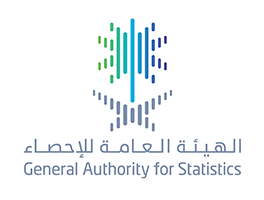Last update 22 / 01 / 2019
(Saudi and Non-Saudi) Unemployment Rate Drops to 6%, and Stabilizes at 12.9% for Saudi Citizens

GASTAT Releases Labour Market Bulletin Q2, 2018
(Saudi and Non-Saudi) Unemployment Rate Drops to 6%, and Stabilizes at 12.9% for Saudi Citizens
On Thursday 9th of Safar corresponding to October 18, 2018, GASTAT releases the Labour Market Bulletin for the 2nd quarter of 2018 on its official website (www.stats.gov.sa); the bulletin is based on the estimates of the Labour Market Survey that is conducted by GASTAT on a quarterly basis as well as the administrative records available at the related entities (Ministry of Labour and Social Development, Ministry of Civil Affairs, General Organization for Social Insurance, Human Resources Development Fund, and National Information Center).
The Bulletin’s results showed a decrease in the number of total employees in the 2nd quarter based on the administrative records available in Saudi Arabia where the number reached (13.018.066) individuals compared to (13.333.513) individuals in the previous quarter; about (315.447) individuals from the previous quarter. The number of Saudi employees based on the administrative records edged down by (25.066) individuals where it reached (3.125.343) individuals compared to (3.150.409) individuals in the previous quarter. On the other hand, the number of Saudi male employees decreased by (14.787) individuals and the number of Saudi female employees edged down by (10.279) individuals.
According to the estimates of 2nd quarter 2018 survey, the economic participation rate of total population (15 years and above) rose to (56.2%) compared to (55.5%) in the previous quarter. Saudi economic participation increased by (42.0%) compared to (41.9%) in the previous quarter. Saudi male economic participation rate stabilized at (63.5%); on contrary, Saudi female economic participation edged up to (19.6%) compared to (19.5%) in the previous quarter.
Furthermore, the data of the Labour Market Bulletin Q2,2018 showed a stability in the unemployment rate for total Saudis (15 years and above) based on the survey’s estimates compared to the previous quarter where it reached (12.9%). On the other hand, the results also showed a decrease in the unemployment rate for the total population where it reached (6.0%) compared to (6.1%) in the first quarter of 2018; a decrease of (0.1%). In contrast, the unemployment rate of Saudi females edged up to (31.1%) compared to (30.9%) in the previous quarter; however, the unemployment rate of Saudi males stabilized at (7.6%).
The number of Saudi jobseekers for the 2nd quarter of 2018 rose to (1.118.801) individuals based on the administrative records available in Saudi Arabia compared to (1.072.162) individuals in the previous quarter; with an increase of (46.639) individuals most of them are bachelor holders (42.894) individuals. On the other hand, the number of Saudi female jobseekers reached (34.238) jobseekers. It is worth mentioning that the criteria of measuring the number of jobseekers will be updated in the coming Labour Market Bulletin (Q3,2018) and that is based on a study that was conducted for job applicants through (Jadarh, Sa’ed, Taqat) by distributing a survey to job applicants in order to update their data.
GASTAT has defined jobseekers as Saudi individuals (males and females) registered in job seeking programs of the Ministry of Civil Affairs (Jadarh and Sa’ed) as well as Human Resources Development Fund (Hafez) where they entered their personal data, qualifications, experiences, and CVs electronically.
In fact, jobseekers included in the administrative records are not subjected to the internationally recognized criteria and conditions of the International Labor Organization (ILO); hence, not all of them are considered unemployed individuals. Therefore, not every jobseeker is an unemployed individual; they may be look for a work while still working in another job, as in the case of jobseekers in the government sector where they work for their own business and not registered as employees in the governmental administrative records (Civil Affairs, Social Insurance, commercial registers, and municipal licenses) such as those who work for their own business outside the establishments.
